US-China Trade War: And The Winners Are...
Published on 15 Jan, 2020
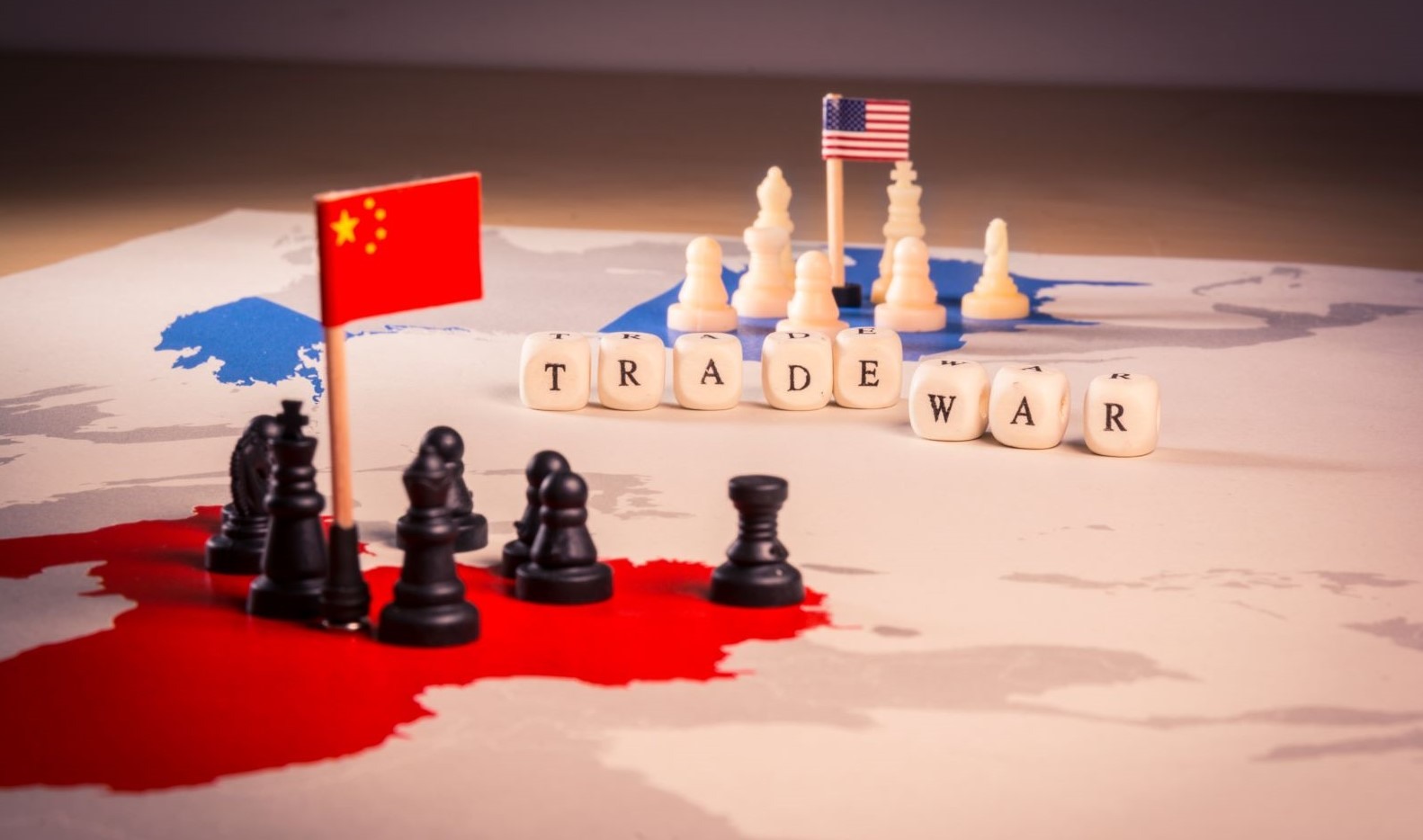
Over the last year and a half, the US-China tariff war has had a significant impact on trade diversion, creating both winners and losers. It has reshaped supply chains globally. The hike in tariff prompted the US to shift its supply chains to other Asian countries, while Chinese firms increased sourcing of goods from the Americas, excluding the US. Vietnam emerged as the biggest beneficiary and has since seen the most significant increase in market share, particularly in electronics and textiles. Asia’s other emerging economies, such as Bangladesh, Taiwan, and Thailand, have also benefitted from the trade war.
The US-China trade war is one of the biggest factors behind the recent global economic turmoil. It is primarily a result of the US’s efforts to reduce its trade deficit with China and promote domestic manufacturing. Until now, the US has imposed tariffs on goods worth USD 370bn. Imports from China to the US totaled USD 550bn, accounting for 21.6% of the US’s total imports in 2018. The US imposed three rounds of tariff increases in the last year alone, the latest being enforced in September 2019. The latest round includes tariffs on clothing, sporting goods and other consumer goods, with a 15% duty (halved to 7.5% in the latest deal) on Chinese goods worth USD 120bn. In retaliation, China levied tariffs in the range of 5–25% on US goods worth USD 75bn. This also includes a 5% tariff on US crude oil. This is the first time oil has got caught up in a trade war. On a positive note, trade tensions between the two are expected to ease as we move toward 2020, with both nations reaching phase one deal to end the ongoing dispute.
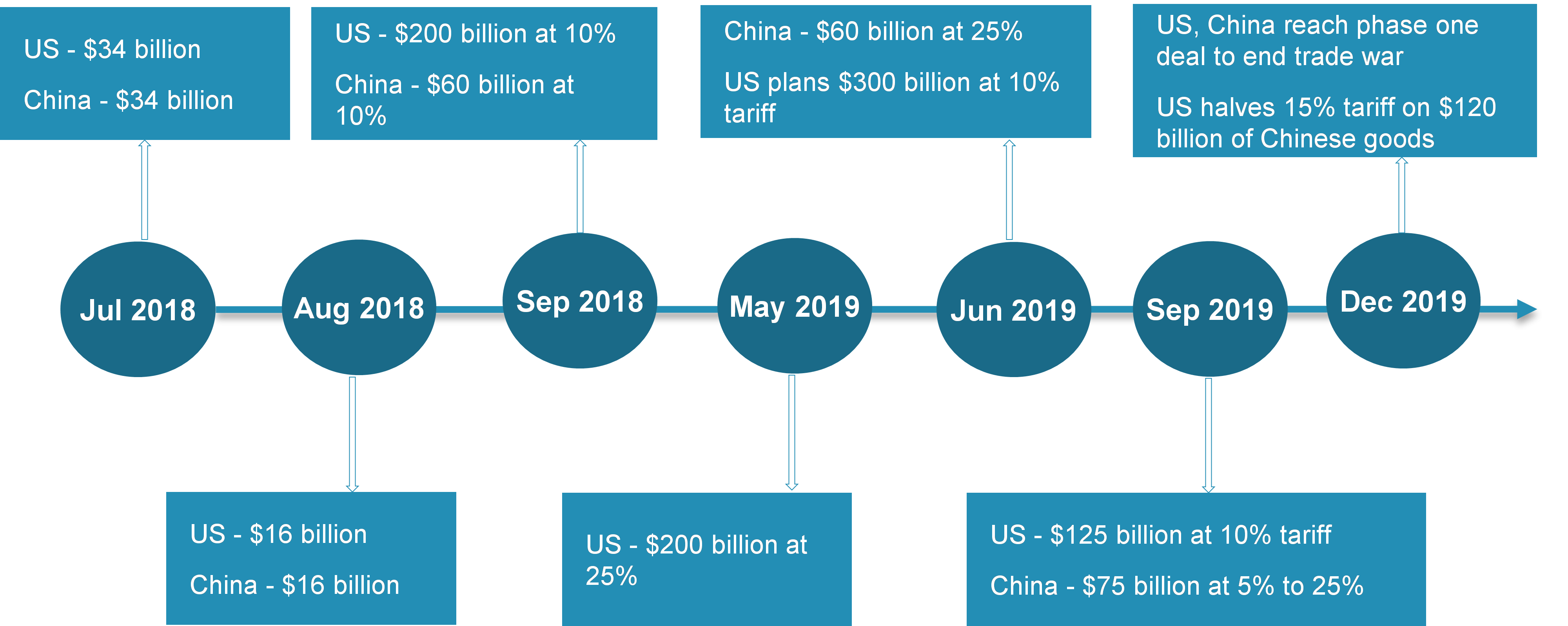
Following the imposition of the latest round of US tariffs on Chinese goods, importers in the US began to seek alternate locations, mainly other Asian countries, for electronic products, furniture and textile goods. China, on the other hand, tilted toward other countries in the Americas (excluding the US of course) for sourcing raw materials, such as soybeans grains and cotton. Given the size of the US and Chinese economies, the substitution effect, even if small, can give a substantial boost to exports from smaller countries.
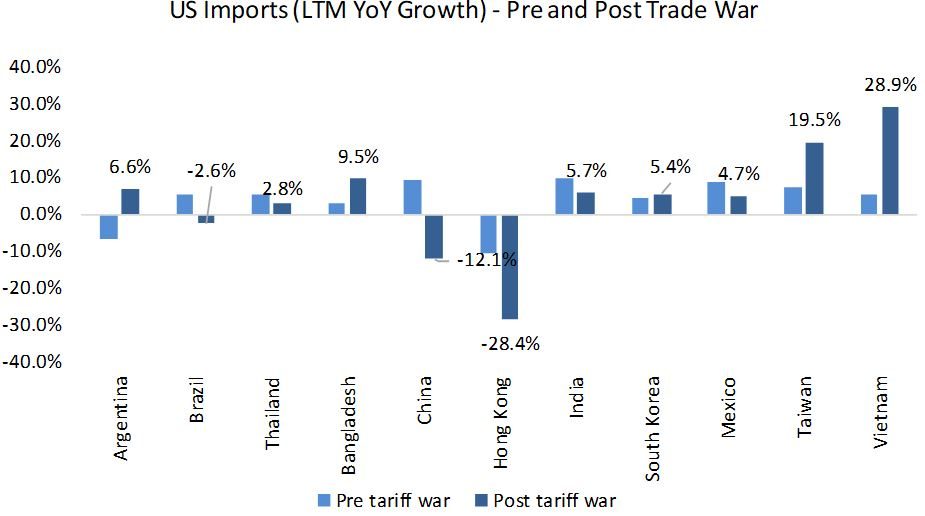
Source: US Census Bureau
Emerging countries are benefiting due to the shift in demand where they have an advantage over other nations. With China’s trade with the US declining, exports from Asian countries such as Vietnam, Taiwan, Bangladesh, and Argentina to the US increased in 2019. Data from the United States Census Bureau shows that the US’s imports from major developing Asian countries (excluding China) rose 8.6% Y/Y (pre tariff – 4.0% Y/Y) in the last 12 months until September 2019, even as imports from China and Hong Kong fell 12.1% Y/Y and 28.4% Y/Y, respectively, during the same period. On the emerging economies front, US imports from Vietnam grew 28.9% Y/Y, from Taiwan by 19.5% Y/Y, and from Bangladesh by 9.5% Y/Y.
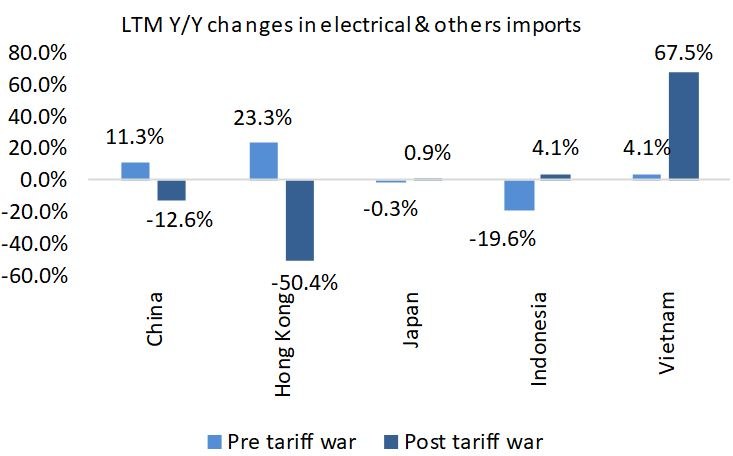 Source: US Census Bureau |
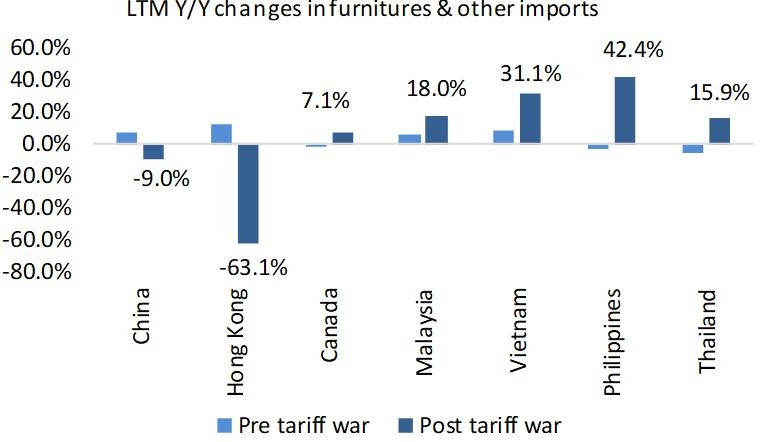 Source: US Census Bureau |
Vietnam is the biggest beneficiary of the diversification in supply chain. The country recorded LTM growth of 67.5% Y/Y in September 2019 in the electrical machinery and equipment space. FDI inflow also surged over 60% in the manufacturing sector, including the labor-intensive electrical and electronics manufacturing segments. According to Vietnam’s Foreign Investment Agency (FIA), FDI increased 69% Y/Y to USD 16.7bn in the first five months of 2019. It further added that the number of new projects rose 39% to 1,400. In the furniture and other imports category, the Philippines is the top gainer with LTM growth of 42.4% Y/Y, followed by Vietnam (31.1% Y/Y), Malaysia (18.1% Y/Y) and Thailand (15.9% Y/Y).
Over the last few years, multinational firms have increasingly relocated their production processes in stages to Asian countries with low cost of labor (such as China, Vietnam, Bangladesh and Taiwan) as they look to benefit from the comparative cost advantage of international trade. However, amid escalating trade tensions between the US and China, companies with industrial bases in these countries have been compelled to reconsider their strategies. Many companies are scaling down their facilities while some are relocating plants elsewhere, such as Vietnam, Bangladesh and Thailand. According to reports, China’s GoerTek, one of Apple's key contract manufacturers, is set to move the production of Apple AirPods to Vietnam. Meanwhile, Google recently announced plans to shift Pixel smartphone production to Vietnam from China. Japan-based electronics giant Sharp has also shelved plans to produce displays for the American market in China. Alternatively, the firm is now planning to set up a plant in Vietnam with operations likely to commence in 2020. Consumer electronics manufacturers Nintendo and Kyocera too intend to move their production facilities to Vietnam from China.
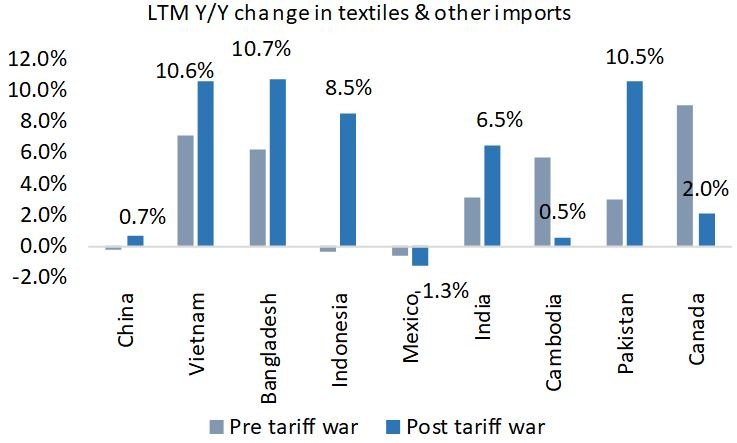 Source: US Census Bureau |
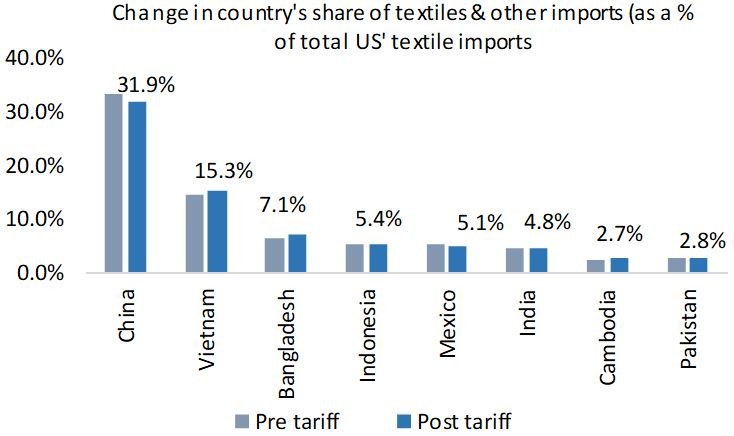 Source: US Census Bureau |
Bangladesh witnessed the highest LTM growth of 10.7% Y/Y in textiles segment, followed by Vietnam (10.6% Y/Y), Pakistan (+10.5% Y/Y) and Indonesia (+8.5% Y/Y). While the market shares of these countries have improved, China retains its position as the top exporter with a market share of 31.9% (-130bps Y/Y). Bangladesh and other emerging countries are expected to record further growth in this segment, as retailers from the US continue to place more work orders in their bid to offset costlier imports from China following increase in tariffs.
To explore the potential created by this drift, Asian countries are introducing investor-friendly regulations to attract foreign investments. Thailand recently launched a new stimulus program, Thailand Plus Package, to get more FDI, mainly those from China. Under it, companies are eligible for a 50% reduction in corporate income tax (CIT) for another five years, provided they invest at least USD 32mn. Cambodia approved laws on e-commerce and consumer protection to encourage investment in the online business. India too joined the bandwagon, lowering its corporate tax rate to 22% from 30%.
Overall, the US’s tariffs on China are impacting both countries—US consumers are paying higher prices for products manufactured domestically, while China’s market share is taking a hit amid significant export-related losses. Many US-based companies are looking at alternative options in Vietnam and other countries. Lately, the US and China reached a phase one deal to end the trade war, where the former agreed to halve its 15% tariff to 7.5% on Chinese goods worth around USD 120bn, in addition to suspending the planned duties that were set to take effect from December 15, 2019. China is yet to agree on any specific tariff reductions. The trade war might subside in the near future, but this may be a wake-up call for firms with industrial bases in China. Thus, firms are expected to scale up their value chain in the emerging market space (outside China), driven by low labor costs, favorable investment policies, and good trade relations with the US. Therefore, Vietnam and other emerging countries would continue to attract investments from multinational firms, as they diversify their operations to hedge against losses likely to arise from trade disruptions in the near future.
